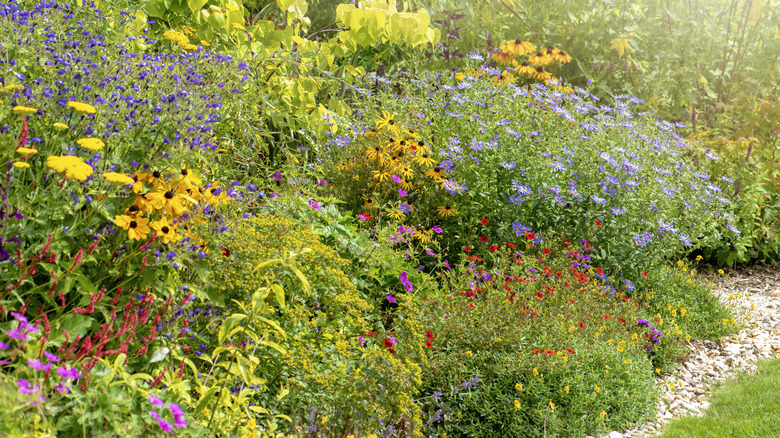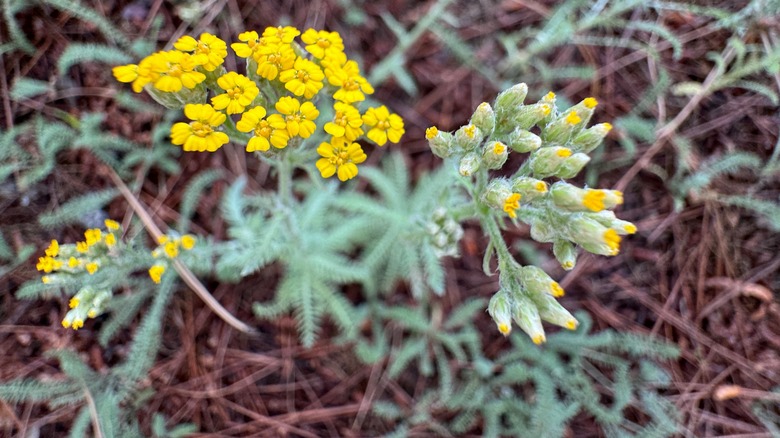The Fuzzy-Sounding Ground Cover That Will Add A Pop Of Yellow To Your Yard
We may receive a commission on purchases made from links.
You may be wondering what ground covers are and if you really need them. Ground covers are ideal for tough soil conditions, where growing other plants such as grass can be challenging. The right ground cover can thrive in areas that are shady, rocky, overly wet or dry, or crowded with tree roots. Besides their practical benefits, ground covers can also invite more beauty and color to your yard. Looking to add a dash of sunshine yellow? Meet woolly yarrow (Achillea tomentosa), the ground cover that's as soft as its name sounds. Its delicate, fern-shaped leaves have a velvety texture, making it an aesthetic multi-sensory addition to your yard. As a relatively low-lying plant that can reach up to 8 inches tall, woolly yarrow provides great ground cover and bright yellow blooms.
Woolly yarrow can thrive in USDA Hardiness zones 3 through 7. If your soil has dry, sandy spots, woolly yarrow is an especially smart choice. It prefers full sun, so it's perfect for adding some color to the dry, sun-drenched areas of your yard or garden. Additionally, yarrow has a long medicinal history, dating back to Achilles, who famously used common yarrow to treat wounds on the battlefield. By choosing yarrow as your ground cover, you'll be part of a long tradition of growing this plant, even if you only want it for its beauty.
How to plant and care for woolly yarrow
If you've chosen woolly yarrow as your ground cover, it's important to know how to grow and take care of yarrow plants. Woolly yarrow plants may be available in your local nursery, but if you can't find mature plants, it also grows well from seed. Choose an option such as Outsidepride Perennial Achillea Tomentosa Yarrow seeds. Around six weeks before the last frost of the season, you can start woolly yarrow seeds indoors in a tray like the Gardzen Seed Starter Tray. Push them lightly into the soil, leaving them uncovered, and be sure keep the soil moist. When planting your woolly yarrow outdoors, start by preparing your planting spot. First, pull any weeds in the area. Then loosen your soil with a small tool, such as a Fiskars trowel, making sure to go at least eight inches deep. Yarrow plants tend to struggle with too much nitrogen, so skip the fertilizer this time and leave enough space between the plants, as each one can spread up to a foot.
With a little preparation work, you'll get to sit back and enjoy woolly yarrow's beautiful yellow flowers in your yard every spring and summer! Woolly yarrow is relatively low-maintenance, and only needs pruning in mid-summer to encourage reblooming. Another advantage of woolly yarrow is that deer and other pests tend to avoid it, allowing it to flourish where other plants might struggle. Unfortunately, woolly yarrow won't do so well in areas with extremely hot summers. If you're looking for heat-tolerant options, there are plenty of other ground cover plants could grow instead of grass in your yard.

